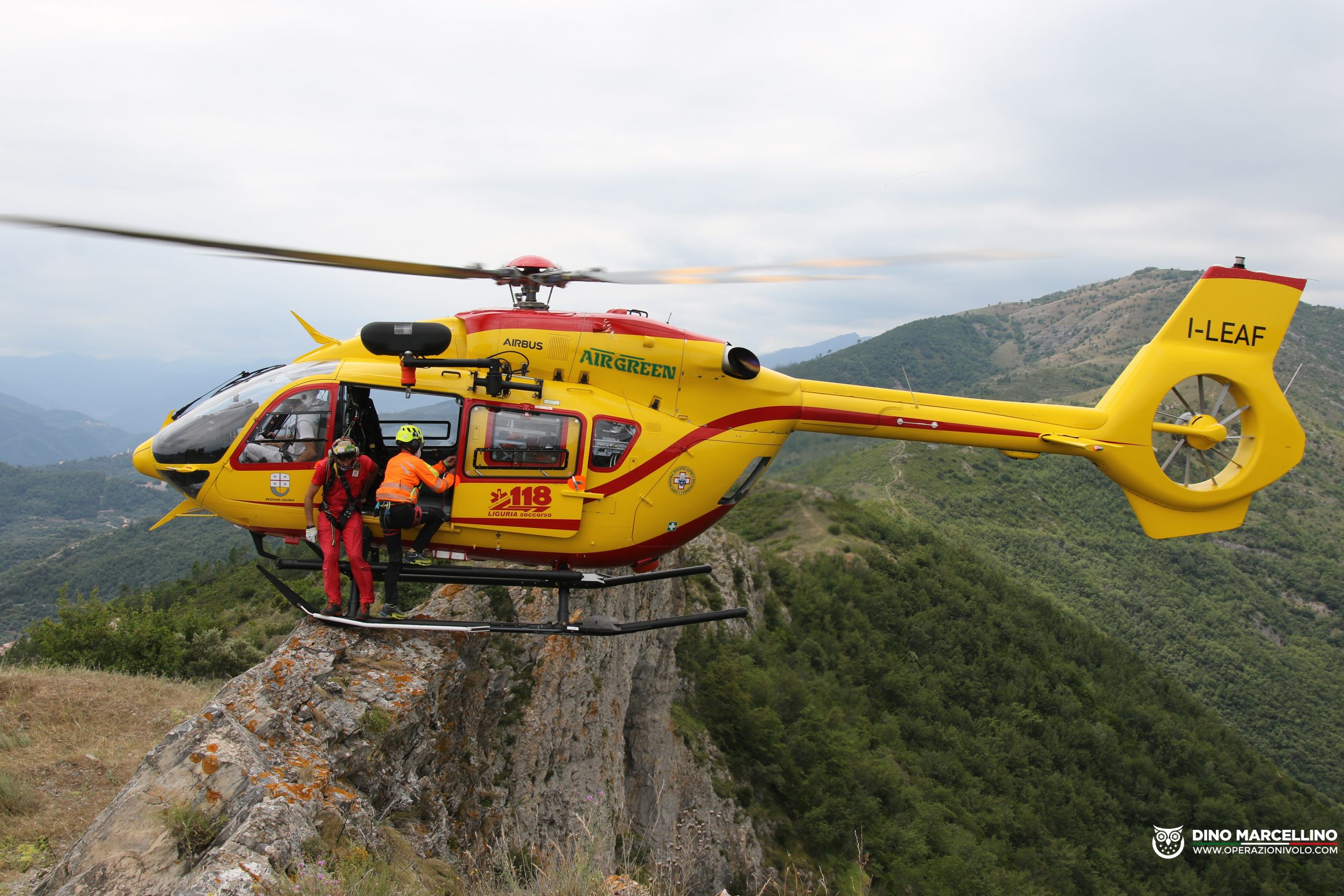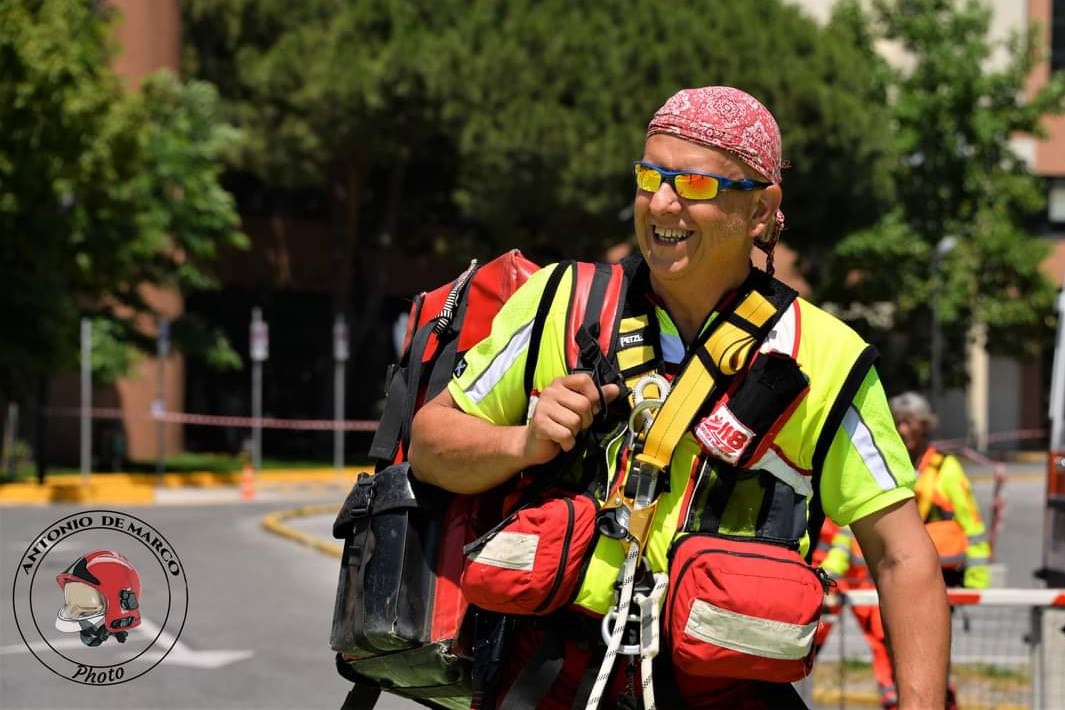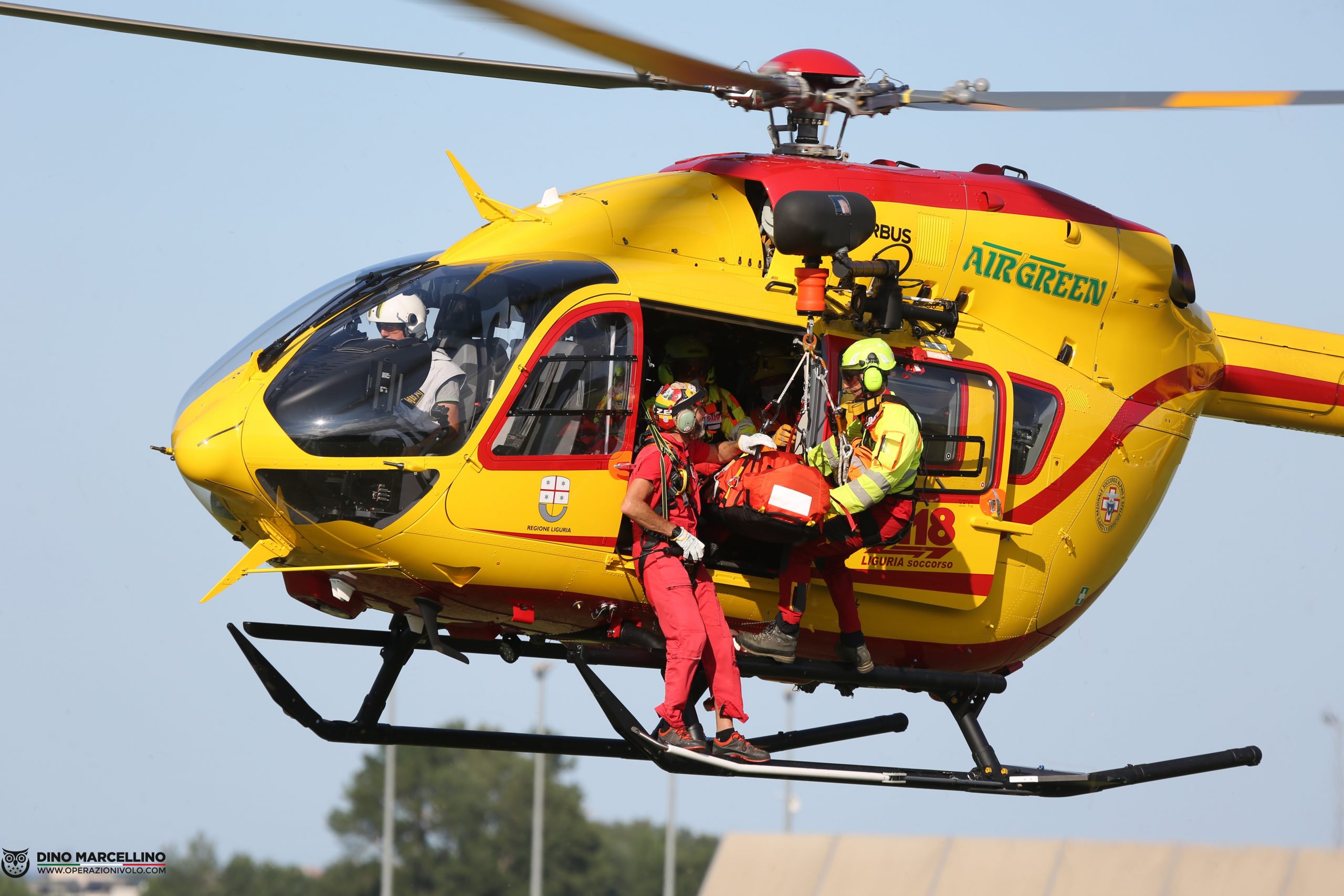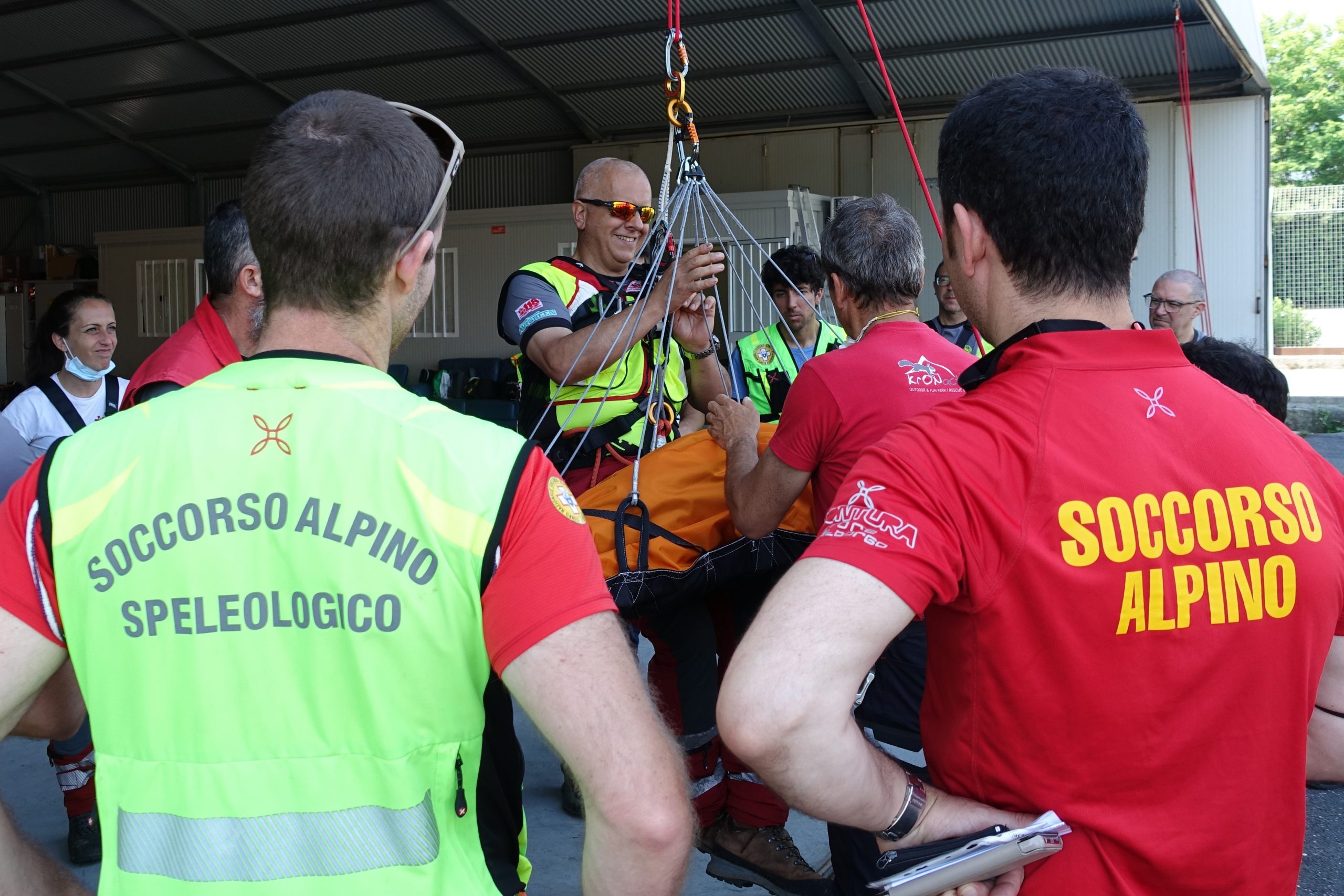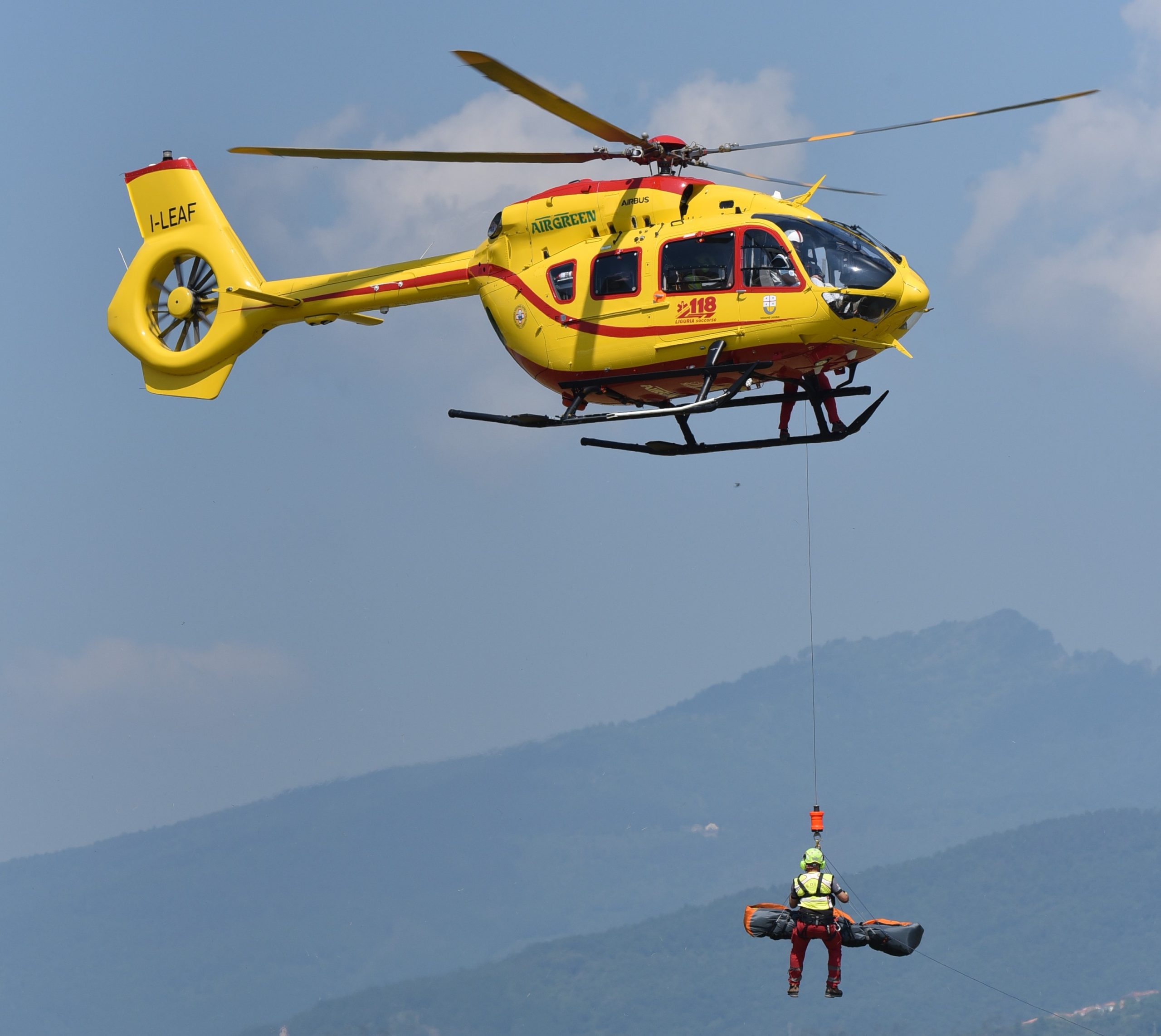
Liguria, the second helicopter rescue base turns one: a review by Dr Lorenzo Borgo
Helicopter rescue in Liguria has had a complex year, different from what was expected. A bit like the rest of the emergency rescue system. 11 July marks the first birthday of the second Ligurian helicopter base in Albenga: an excellent opportunity to ask Dr Lorenzo Borgo, a doctor with the 118 emergency service, for his opinion and a long-standing expert on ambulances and helicopters
Helicopter rescue in Liguria, the first birthday of the Albenga base
The helicopter in Albenga represented a revolution in the distribution of workloads on the Ligurian emergency system by covering the provinces of Savona and Imperia. It allowed the first base to concentrate on the rest of the territory, mostly the Ligurian Levant.
In reality, the division relates to the areas of intervention, not to the composition of the technical and medical staff: the ten doctors and eleven nurses work indiscriminately on both bases and also take turns on the local emergency system’s ambulances.
![]() An intense year for the Liguria helicopter rescue service:
An intense year for the Liguria helicopter rescue service:
The second base, located in Albenga, operated (in the period included from the inauguration of 11 July 2020 to 1 July 2021) in 473 interventions. In 95 cases, the mission involved the boarding of personnel by winch, and 45 times heliboarding was used.
On ten times the personnel were re-embarked by helicopter, and on 66 missions the rescue team (and the injured) were re-embarked by winch.
The first Albenga helicopter rescue base birthday: an interview with Dr Borgo, doctor of the 118 in Liguria
“Let’s enter the subject step by step. For our readers who are less familiar with certain issues: what does it mean to be a doctor in the 118 services? What skills and responsibilities do you have?”
“Being an out-of-hospital emergency doctor romantically means being a doctor as people understand it, i.e. a doctor who has to be able to handle a bit of everything.
From cardiological emergencies to traumatology and paediatric emergencies, then working in a hostile environment, therefore outside the protective walls of a hospital environment.
Fewer resources, certainly: so we have to know what to do and how to behave with the means at our disposal.
The advantage is that I have the good fortune to be able to do this both in an ambulance, which is typical of Liguria but not of the whole of Italy, and to work with rescue helicopters, too.
So you could say that my professionalism, which I spend in the ambulance, I also spend in helicopter rescue: the helicopter is nothing more than an ambulance that allows us to get to distant and uncomfortable areas more quickly.
But what you do in a helicopter is the same as what you do in an ambulance: the quality of care is the same.
Depending on the rotation schedule, we alternate between daytime in the helicopter and night-time in the ambulance, or daytime in the ambulance and stop for the helicopter, as the helicopter is currently available only during the day”.
“Liguria’s 118 services, like all 118 services, is coming out of an unexpected 2020 and the first part of 2021 with a major impact: what is the balance sheet of these last 18 violent months?”
“It has certainly been challenging and tiring, also because we had to pick up patients at home.
We’ve had a lot of operations, but the hospitals have certainly had more problems than us because the patients have needed prolonged hospitalisation, too.
We had problems because sometimes it was difficult to discharge the patient to the emergency room because the receptivity of the hospitals, in certain phases, was really problematic.
At the same time, there was a slight reduction in the number of operations: during the lockdown, people were moving around less, so there were fewer incidents and fewer people out and about at night, and therefore problems with crowds.
The serious problem is that many people were afraid to call the emergency system because they were afraid to go to the hospital. It was serious because people with a heart attack or cerebral ischaemia problems did not call 118.
It led to mortality increasing from cardiovascular diseases precisely because people were afraid to go to the hospital.
Although, the hospital areas were then protected areas because they tried from the beginning to guarantee the cleanest possible routes for patients who were not covid but had emergency pathologies”.
“We asked you for an interview because, in a few days, it’s the first birthday of the second helicopter rescue base in Liguria, and we wanted to ask you for an assessment. How has this insertion gone, this other possibility for the Ligurian citizenry?”
“As an operator and as a citizen, I am very happy with the results obtained.
It was a problem to get started because we had to start from scratch with the Covid, so it was difficult to get started.
However, it was immediately clear how important it was to have another advanced intervention vehicle.
Liguria is a long and narrow region with many traffic problems, especially in this period, due to the motorway construction sites that sometimes make it impossible to move even just a few kilometres.
A helicopter strategically positioned in Albenga has made it possible to reduce intervention times, especially in the western part of the region: previously, to intervene in the Imperia area, we had to leave from Genoa, now we take off from Albenga, so take-off and intervention times are extremely reduced.
At the same time, we are offloading the territory because we can take charge of the patient and bring him to the reference hub, which is often the second-level DEA at Santa Corona and we leave the ambulance free in the territory.
In addition, this helicopter provides us with coverage 365 days a year, something that the Fire Brigade’s helicopter is currently unable to guarantee due to their problems, and we, therefore, cover the whole of Liguria.
We can already operate in low light conditions and, from the next year, we plan to activate the H24 service, which further improves the emergency system response. It is extremely important.
The helicopter we are using is already equipped and certified to fly with night vision goggles (NVG).
Furthermore, we must remember that Emergencies are not often predictable, that there may be a need for two simultaneous interventions and that we can, therefore, guarantee a better response: it has frequently happened that we have two machines in the air at the same time.
With, of course, special attention from the operators in managing the arrivals, so as not to get in the way”.
“Second helicopter base in Liguria: can we ask you which helicopter they have made available to you and how did you get on with it?”
“We are talking about the Airbus H145 model, a really high-performance, reliable and silent helicopter.
Thanks to its skids and compact size, we were able to land even in the narrowest and most inaccessible areas of Liguria, which would otherwise be unreachable.
From a medical point of view, we particularly appreciated the comfort of the flight and the possibility of operating on the whole of the patient body on a stretcher, performing BLS manoeuvres and endotracheal intubations if necessary.
The Fenestron intubated rotor allowed us to operate in total safety even during approaches and landings on unprepared areas, on slopes or in the presence of obstacles”.
“You mentioned the 24-hour operation. Can you explain to someone who is not familiar with the helicopter rescue what the specifics of night flying are? What problems does it present?”
“The problem with night-time operations is linked to the identification of suitable and certified areas for landing: the regulations are very complex.
Initially, helicopter rescue involves transport from one helipad to another: you can’t do a primary intervention in the field, so to speak.
In order to solve this problem, we are mapping as many helipads as possible in Liguria so that they can also be used at night and bring the helicopter closer to the hinterland.
It is happening thanks to the collaboration of the municipal administrations we asked, who have made themselves available to improve the surfaces, and in collaboration with the Piedmont Helicopter Service who helped us because they first started working at night, and, therefore, allowed us to identify and certify as many helipads as possible.
So next year, when the 24-hour service starts, we will already have a good network of bases where we can go through to pick up patients.
So the local ambulance will be able to transport the patient from any village in the hinterland and, in any case, far from an emergency room.
Not only that but being able to fly at night allows us to extend the service into the late evening, as helicopters cannot normally fly at half-past four in winter.
Last year we already flew in the dark in the late afternoon, and this is thanks to the means made available to us because the helicopter made available by the company Airgreen and the training of their personnel allow us to fly in extremely peaceful conditions”.
“Without going into detail, let’s talk about the 118 reform. Leaving Liguria, I’d like to ask you for a technical assessment: what is the state of the art of helicopter rescue in Italy? What could be improved”.
“Each region organises itself as it sees fit.”
There is an organisation, the HEMS Association, which tries to bring together all the different helicopter services. So, they can share the problems.
It’s not a homogeneous situation, in the sense that with extremely high-performance machines, procedures can change.
So much so that there are many helicopters in Italy that do not use the winch and prefer to use the helicopter as a helicopter.
It is a real pity, especially considering that some helicopters, such as the one we are currently using, the Airbus H145, allow the hoisted stretcher to be loaded directly into the cabin, even in shunted flight.
This feature increases safety, as it reduces the time of exposure to risk during winch operations.
In our long and narrow region, where it is difficult to land, we would not be able to rescue many patients without the winch use.
It is therefore essential, in my opinion, to spread the use of the winch within the helicopter rescue services: this involves staff training and close cooperation with the mountain rescue corps, which really helps us out.
Having a doctor who is brought to the scene is certainly the winning choice, and I must say that the European and Italian model is certainly a winner compared to the Anglo-Saxon model, which does not provide for a doctor on the ground.
Basically, because it costs more.
But when a patient has a major trauma, an acute coronary syndrome or a respiratory problem, the philosophy must be to bring the doctor to the area.
So bring the emergency room to the patient’s home: that’s what we do, with enthusiasm”.
We bid Dr Borgo farewell, thanking him for his kindness and patience in explaining complex concepts with simplicity: Liguria’s 118 services are entrusted to the expert and capable hands of first-rate professionals, and this is all that citizens need.
Read Also:
Italy, Bologna’s Helicopter Rescue Service Turns 35: “And We’re Going To Get Even Better”
SAF Orders Three H145s For EMS Missions In France
HEMS In Norway, A Study To Introduce A System Of Equity In The Location Of Helicopter Bases



